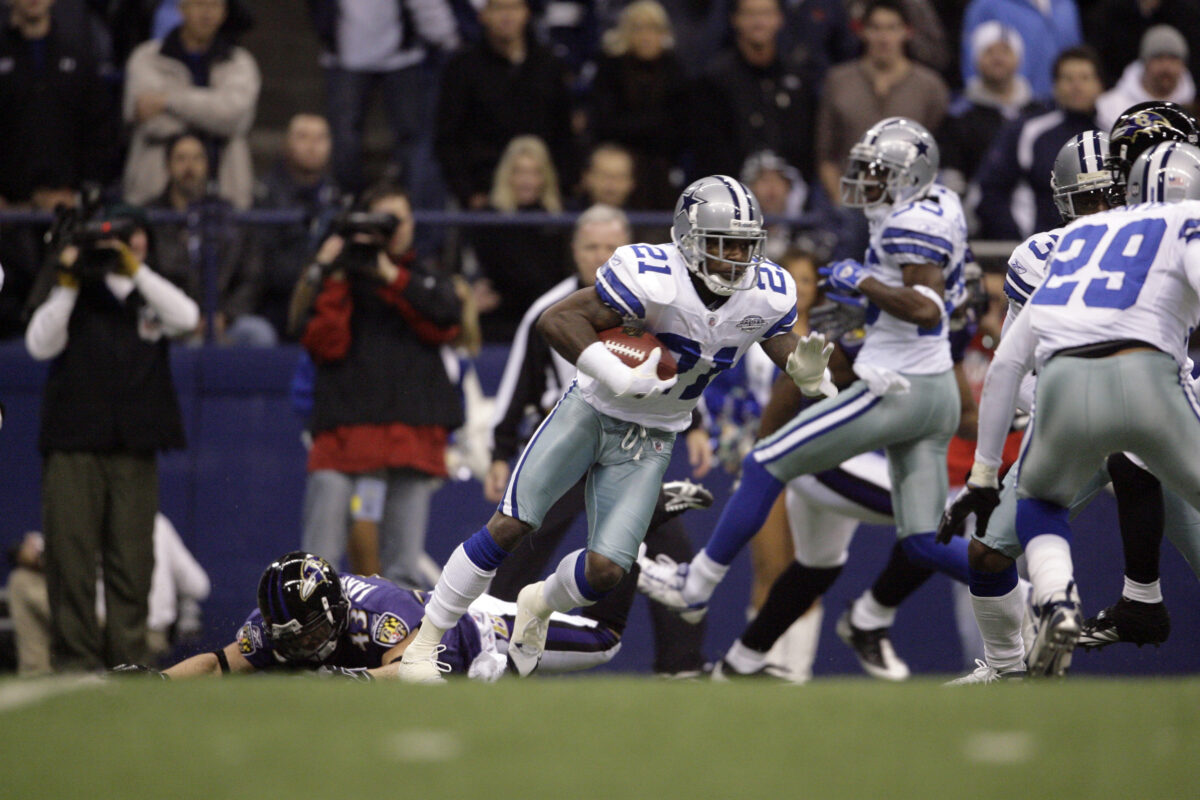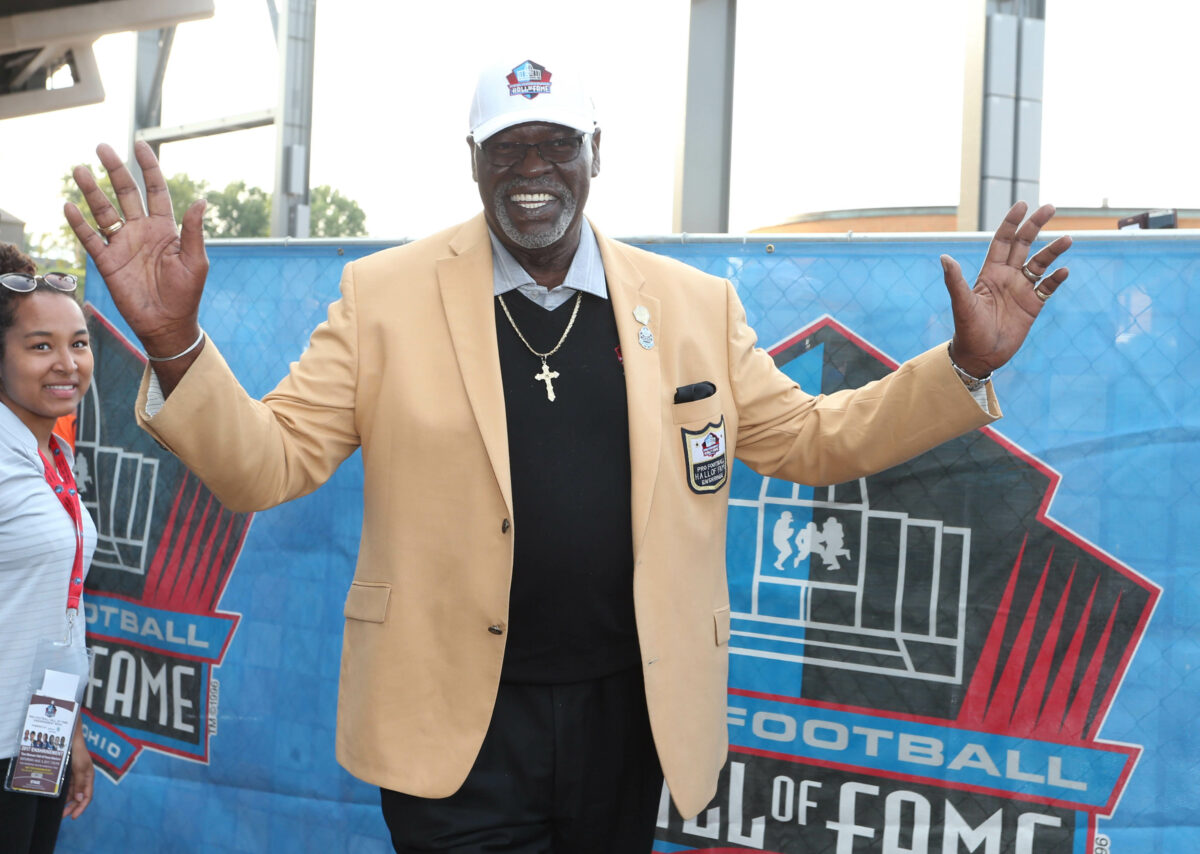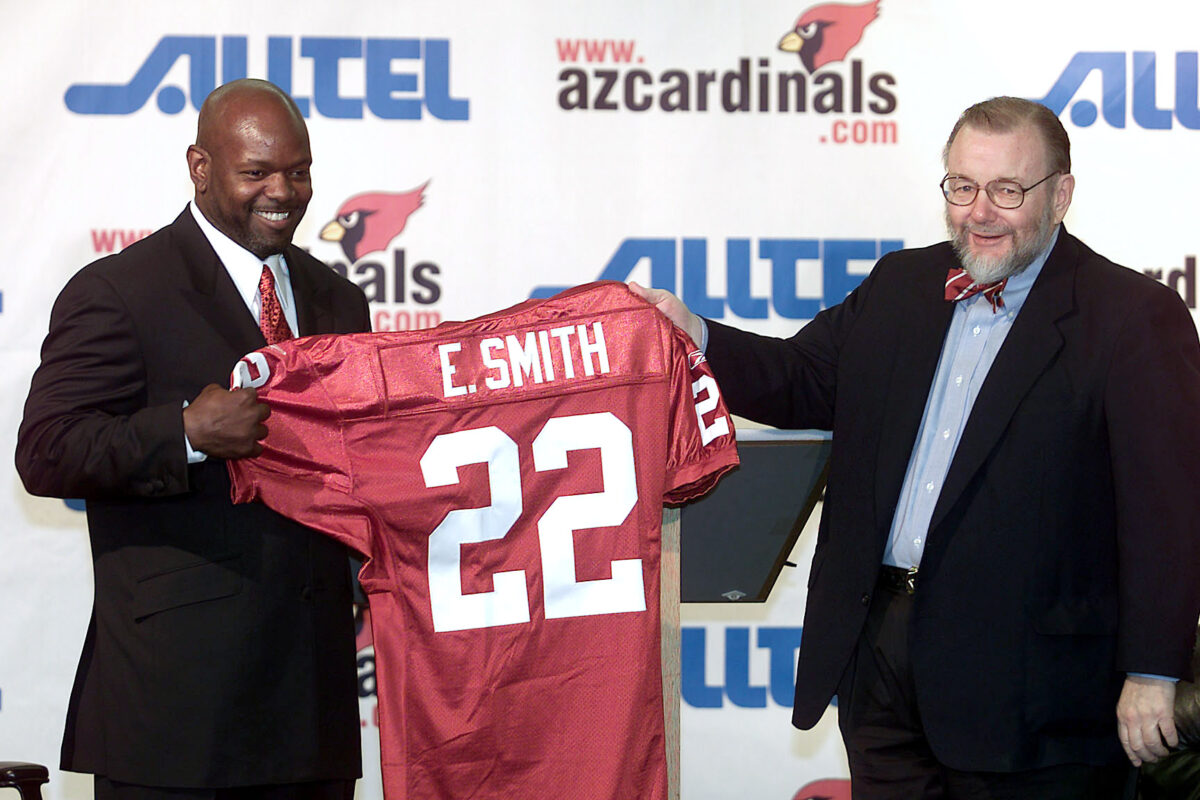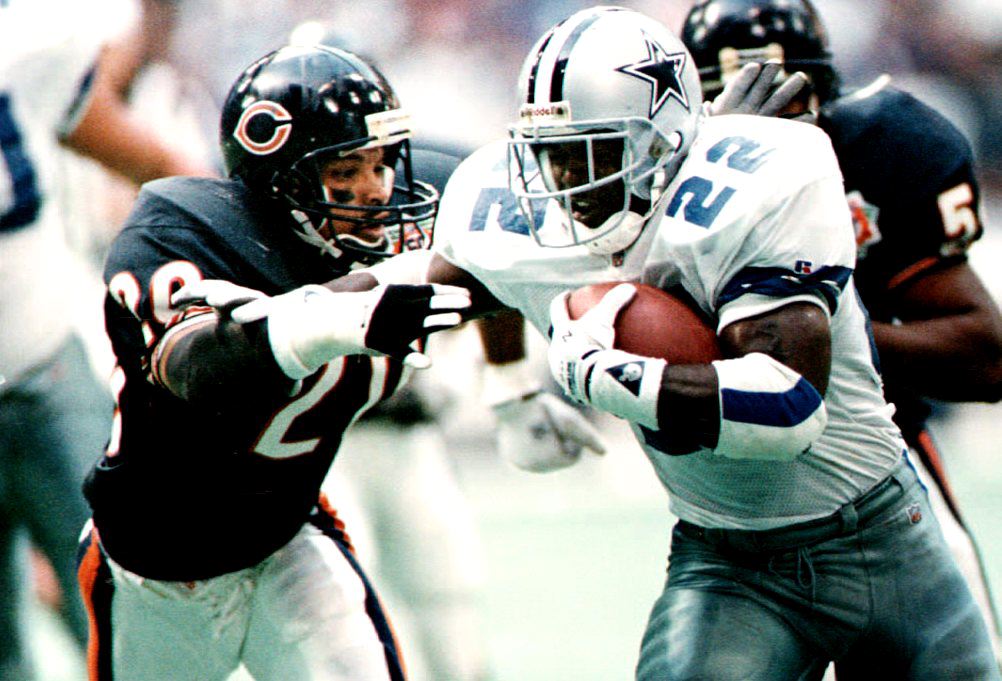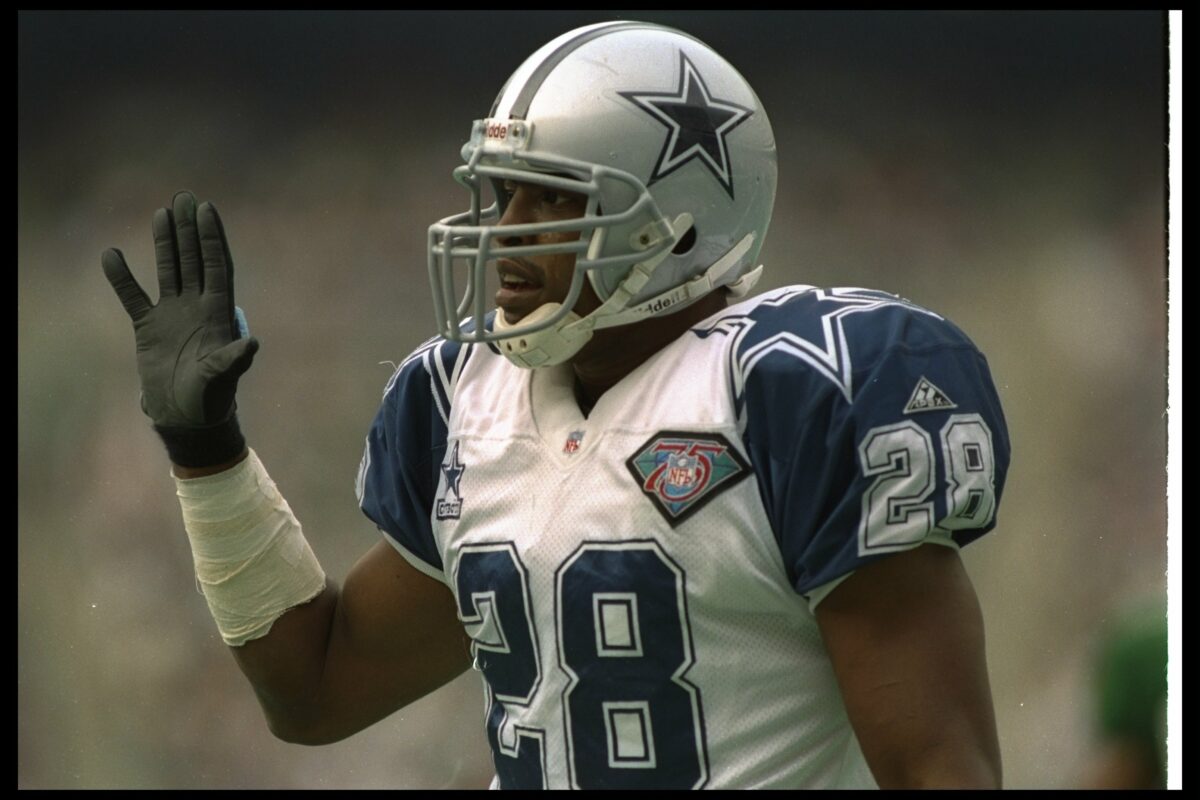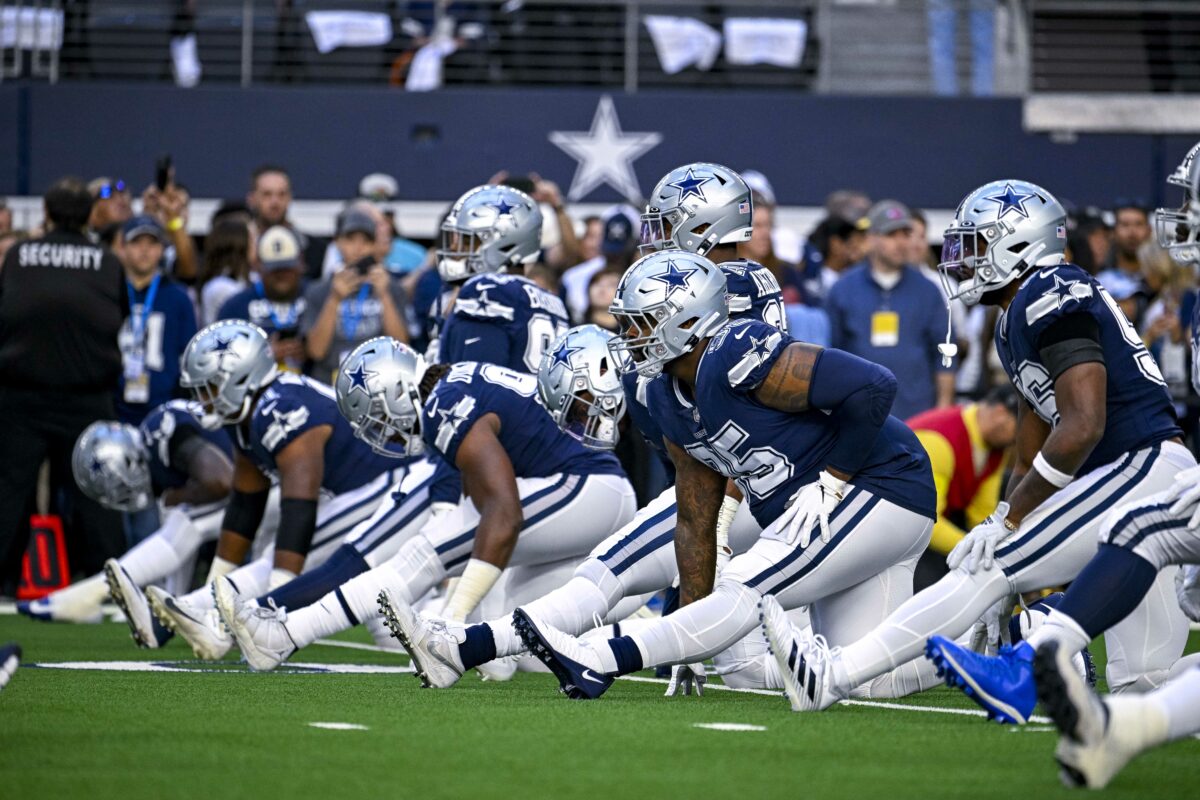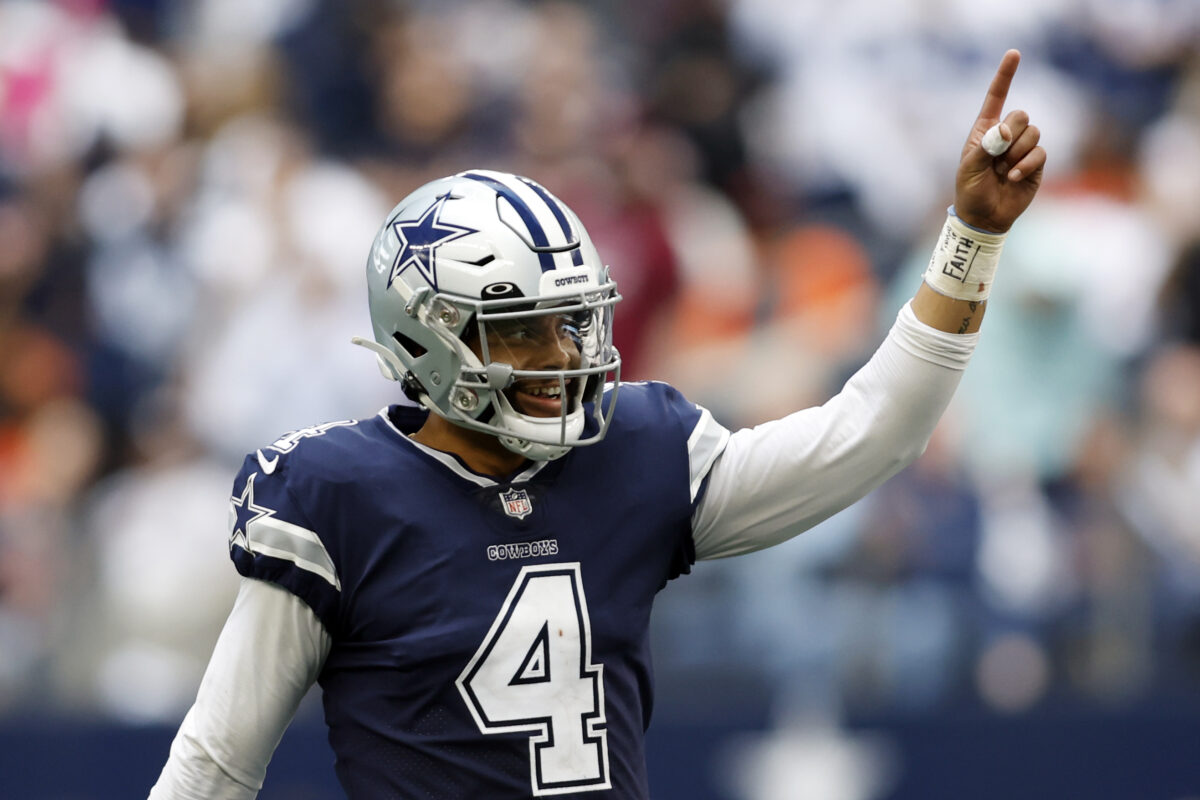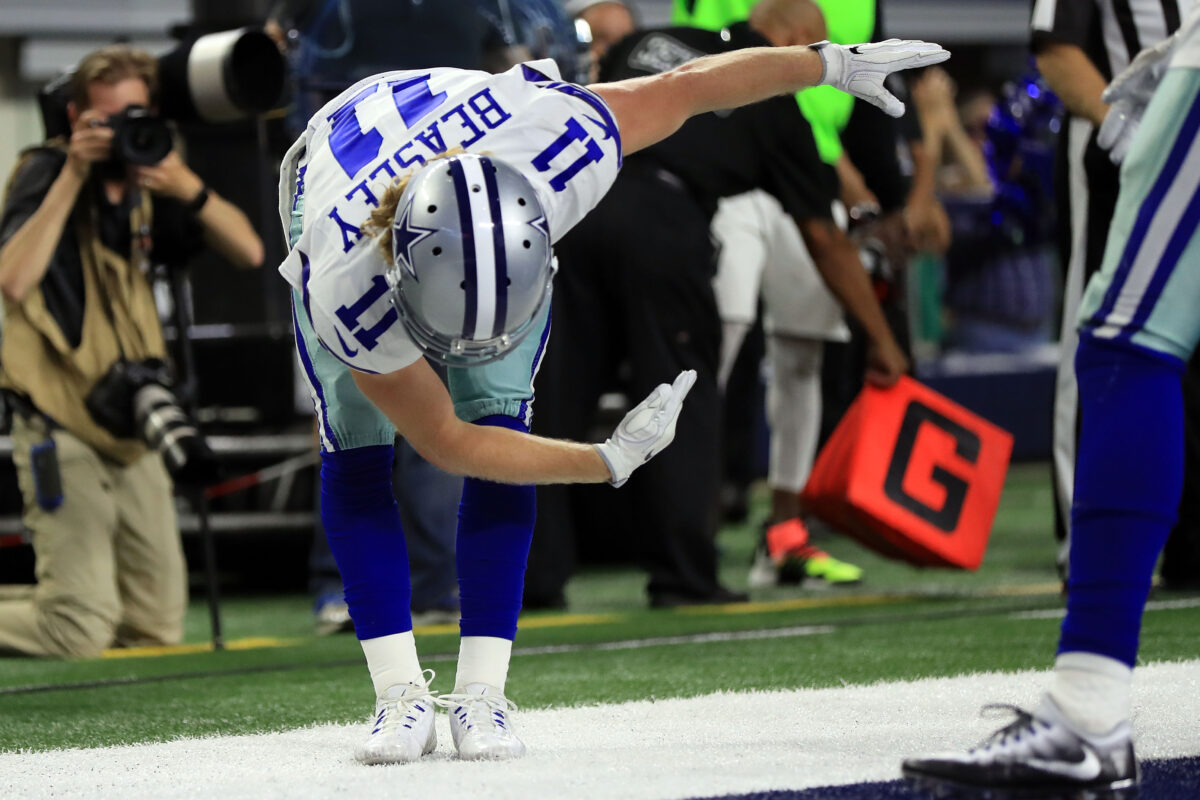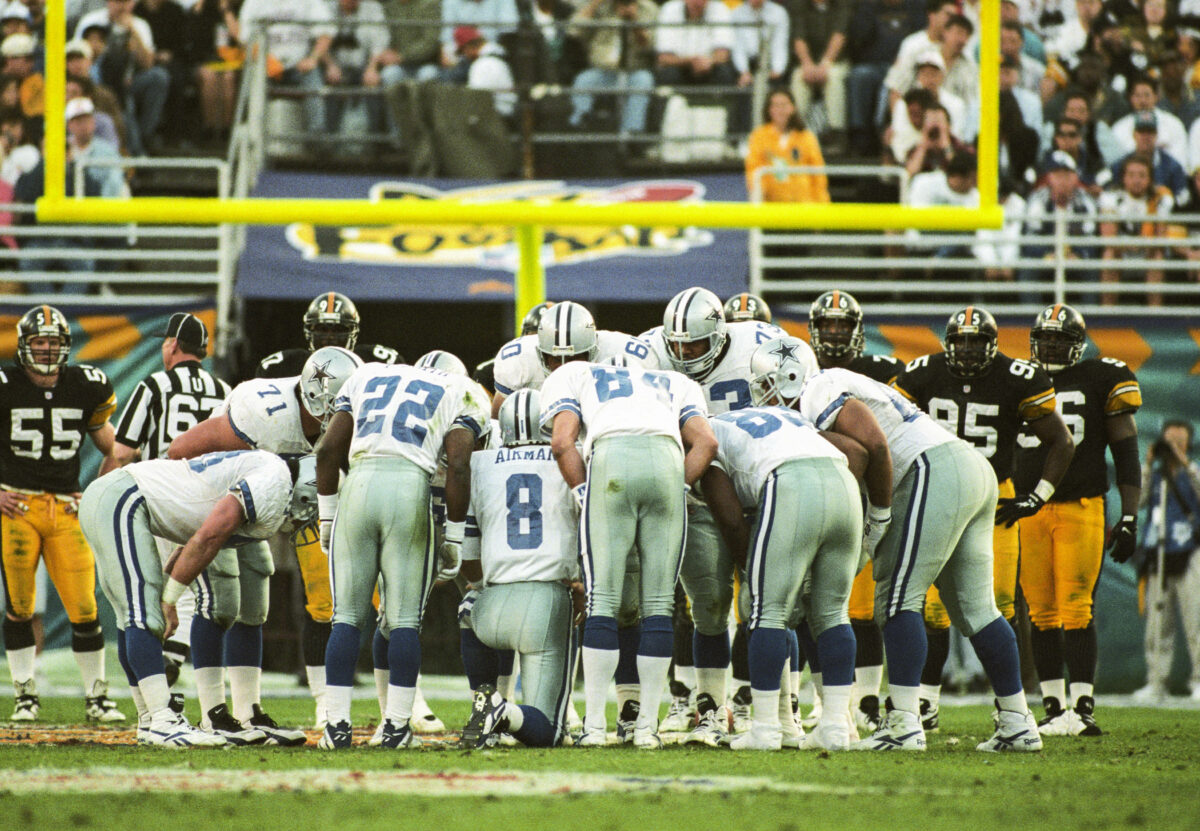Adam “Pacman” Jones was for many years the league’s go-to example of what not to do.
But the short-lived Cowboy, once the “NFL poster boy for bad behavior,” hasn’t turned just his own life around. Along the way, he’s also made the difference for a fallen teammate’s family, as detailed in a thoughtful piece for The Athletic by Zak Keefer.
Jones, now 39, has been raising the two sons of Chris Henry as his own for a couple years. Jones and Henry had been close friends while playing together at West Virginia; Henry died in 2009, during his fifth season in the league.
Chris Jr. is a straight-A student and though he won’t even graduate high school until 2026, he’s already received offers to play college ball at some of the nation’s top programs- Ohio State, Michigan, Georgia, and USC, as well as West Virginia. He is thought to be a lock as a top-10 draft pick whenever he declares.
“I don’t know if I’ve ever seen a kid track the deep ball like him,” Jones told Keefer. “He’s more skilled than me and his dad were at his age.”
Chris’s younger brother DeMarcus is a budding basketball talent who will start high school in the fall.
And the boys’ legal guardian is the man who was once called “nothing but a disaster off the field” by the man who drafted him into the NFL and had at one point been suspended for 22 out of a possible 28 games.
Jones is well aware of the irony.
“I’ll be damned if these kids make the same mistakes I did,” he says.
The sixth overall pick in the 2005 draft, Jones held out for most of his rookie training camp in a contract dispute, with the Titans worried right from the jump about non-football incidents while he was in college. He had a breakout second season, but behind the scenes, Tennessee was already ready to sever all ties, thanks to a continued downward spiral of legal troubles.
Jones had been arrested multiple times since turning pro; his sheet included everything from felony vandalism and obstruction of justice to probation violations and assault. The league finally suspended Jones for the 2007 season; it was the first time in nearly a half-century that a player was suspended for an offense other than substance abuse.
In spring 2008, news broke that Jerry Jones and the Cowboys were trading for the cornerback and return specialist even before he had even been reinstated. The deal went through, and Dallas got Jones for just a fourth-round draft pick.
Having previously brought aboard Terrell Owens and Tank Johnson, the Cowboys were no stranger to reclamation projects. The Jones trade terms even included contingencies that would change the Titans’ compensation if he were to be suspended or arrested again while a Cowboy.
The club threw considerable resources at trying to help him make the most of his second chance in Dallas. Michael Irvin and Deion Sanders pledged their personal guidance; even Hall of Famer Jim Brown wanted to offer his support to the troubled Jones. The bad boy’s path to football redemption with America’s Team was a major plotline on that summer’s edition of HBO’s Hard Knocks series.
[affiliatewidget_smgtolocal]
Over the first six games of the 2008 season, Jones delivered promising results: 25 tackles, six passes defended, a forced fumble, two fumble recoveries.
But then an altercation at a Dallas hotel resulted in another suspension, this time for six games. Jones would appear in just three more contests as a Cowboy.
Jones suffered a neck injury in his first game back from injury. There were stories of Jones getting into physical altercations with the security personnel the Cowboys had assigned to him. But even more troubling was the discovery by the Dallas front office that Jones had been involved in a 2007 Las Vegas shooting that left a man paralyzed. The Cowboys officially cut Jones early in the 2009 offseason.
Jones made a return to the NFL in 2010 with the Bengals. This time, it clicked. He was named a first-team All-Pro in 2014, made the Pro Bowl in 2015, and lasted eight total seasons in Cincinnati.
He retired from the league in 2019 after a final season with the Broncos.
Jones had kept in touch with Henry’s wife and children over the years. Shortly after hanging up his own cleats, Jones and his wife invited the family to move into their Cincinnati home with them. There was no fanfare. His former coaches and teammates only found out from other people. Jones didn’t even want The Athletic story written.
He admits now he was diagnosed as bipolar in 2015 but refused medication until he retired from football because he didn’t want it affecting his play. One can only imagine how the undiagnosed condition had contributed to his infamous transgressions over his early career.
Today, Jones remains involved with league happenings as one of the hosts of the I Am Athlete podcast and as an analyst for The Pat McAfee Show; it was Jones who broke the story last week of Deion Sanders needing emergency surgery due to blood clots in this groin. He is part of a group of ex-players- including Terrell Owens- starting the Beach Football League.
But he also has other business interests, including the gym he started in the suburbs of Cincinnati. Former teammates often bring their sons for week-long bootcamps. And he runs a demanding year-round workout regimen for Chris Jr. and DeMarcus, intent on helping them make the most of their first opportunity so that they’ll never need a second or third.
It’s a lesson Pacman Jones can uniquely teach.
“Visit the past,” he tells the kids- his own as well as Henry’s- “but don’t stay in the past.”
[lawrence-auto-related count=3]
[mm-video type=video id=01h3nen5mz8n99b3g7mn playlist_id=01eqbwens7sctqdrqg player_id=none image=https://images2.minutemediacdn.com/image/upload/video/thumbnail/mmplus/01h3nen5mz8n99b3g7mn/01h3nen5mz8n99b3g7mn-e2752db3667fa5492e1ed16bdf6aef38.jpg]
[lawrence-newsletter]
